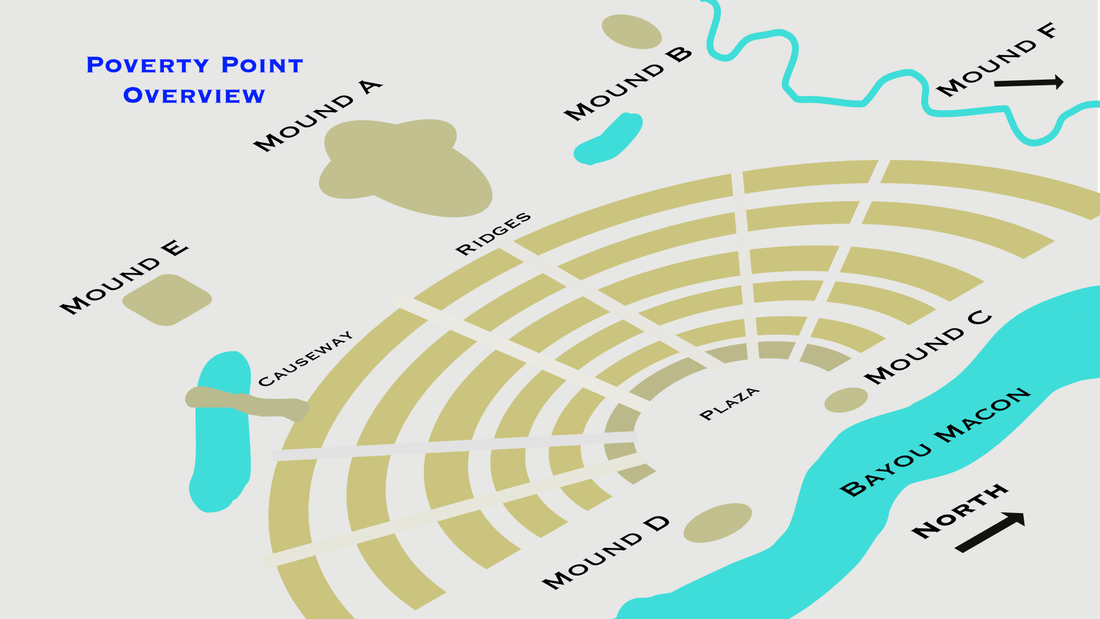Have I now become your enemy by telling you the truth?
Galatians 4:16
 My first visit to the Poverty Point World Heritage Site came in December of 2020. I had been working in the Kisatchie National Forest a couple of hours away. An unexpected weekend off gave me the opportunity I had been hoping for. From Alexandria, I drove northeast through forested countryside. Classic country music played on the radio. An early afternoon arrival meant that I only had a few hours to tour the museum and the mounds. As usual, I stretched the limits of the five p.m. closing time. As the sun dipped in the west, I walked through the “nature trail” portion of the grounds. I had heard an owl hooting from within the autumn-colored trees near the largest mound (now known as Mound A). As I walked through the woods, still marked by the curving ridges of earlier residents, the owl had joined me again. I scanned the tall trees, but couldn’t see the owl. My footsteps crunched on the path, until the owl sounded off again. Again, I couldn’t find him. My handy audio-recorder captured the sound for posterity. At sunset, I was the last to leave. The staff were nice enough to not lock me in behind the gate. Having such a site mostly to oneself was unique, but the images captured within my cameras left me unsatisfied. This had been a reconnaissance mission. Someday, I hoped to return to do the site justice. In the fall of 2022, a new opportunity came. My latest Louisiana project allowed for an extended Thanksgiving break. This time, I would drive up from Leesville, Louisiana to Monroe for a couple of nights. Along the way, the same country tunes played on the radio. I took it as a sign that this was meant to be. My first stop would be the Black Bayou National Wildlife Refuge in Monroe. I wanted to capture images that might resemble the ancient landscapes of prehistoric Louisiana. The refuge did not disappoint. Although there were no alligators present (I’ve seen more in Texas than Louisiana), birds were plentiful. A couple of elusive deer quietly made their way through the woods. A hawk kept watch over the proceedings from his perch overhead. As usual, my efforts to capture these images on camera were amateurish and aggravating. At the very least, I felt that the refuge had given a sense of the resources available to the people of Poverty Point. It was well worth the effort. The next day, I returned to Poverty Point with designs on spending the entire day on site. The weather was not as favorable this time. I had enjoyed mild temperatures during the first visit. Although skies were just as sunny this time, a cold wind blew all day long. Once again, I did my best to capture images of the mounds, the ridges, and Bayou Macon. A crop duster droned on in the distance. No owl greeted me this time. The museum had a fair number of visitors, but no one spent as much time hiking the park trail as I did. Once again, I stayed until the gate was ready to be locked behind me. The next day, I returned home with designs on further research. In the days that followed, I noticed the paucity of popular writings on the Poverty Point culture. The on-site museum maintains a video room for presenting a few informative documentaries on the subject. I was looking for some in-depth written analysis of the site. I finally found it within the pages of Jon Gibson’s book, The Ancient Mounds of Poverty Point: Place of Rings. With this book providing the necessary information, I could finally begin assembling the latest episode of Archaeology Travelogue. This video provides a broad overview of the site and its history, but I would recommend visiting the site in person for the full experience. When you arrive, stand quietly in the woods. Perhaps the owl will speak to you as well…
0 Comments
|
Craig CosbyArchives
November 2023
Categories |